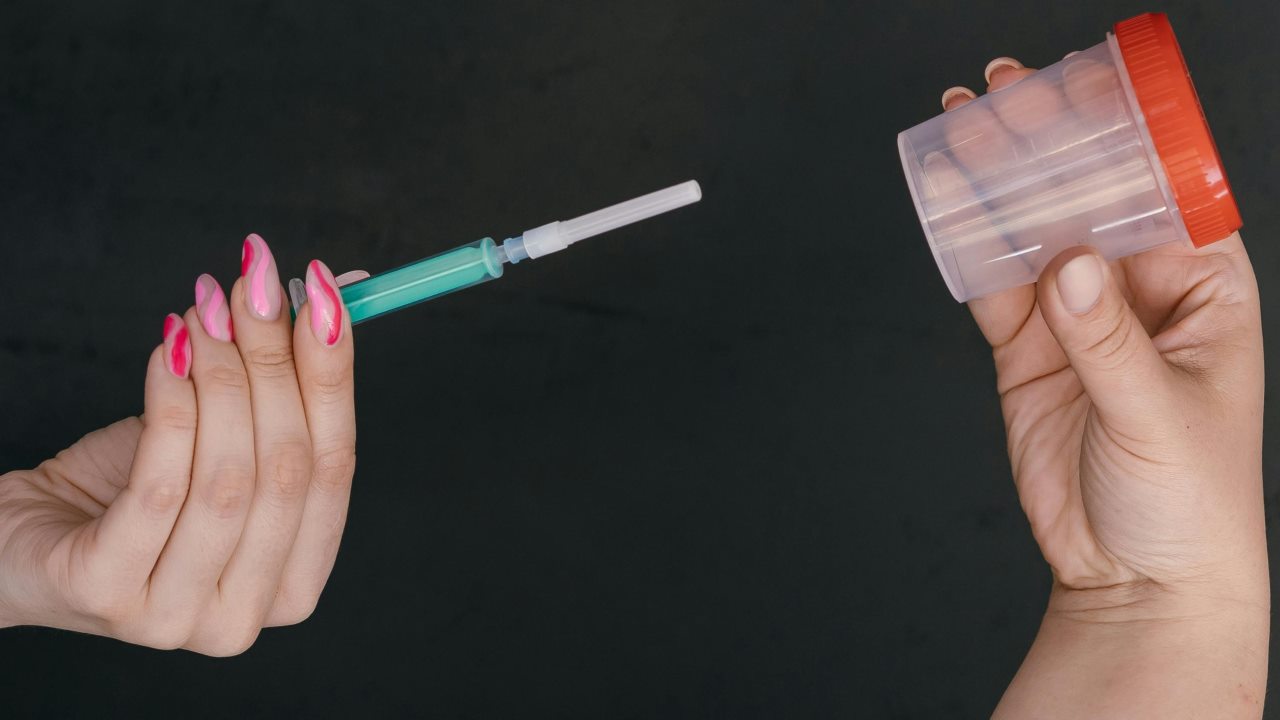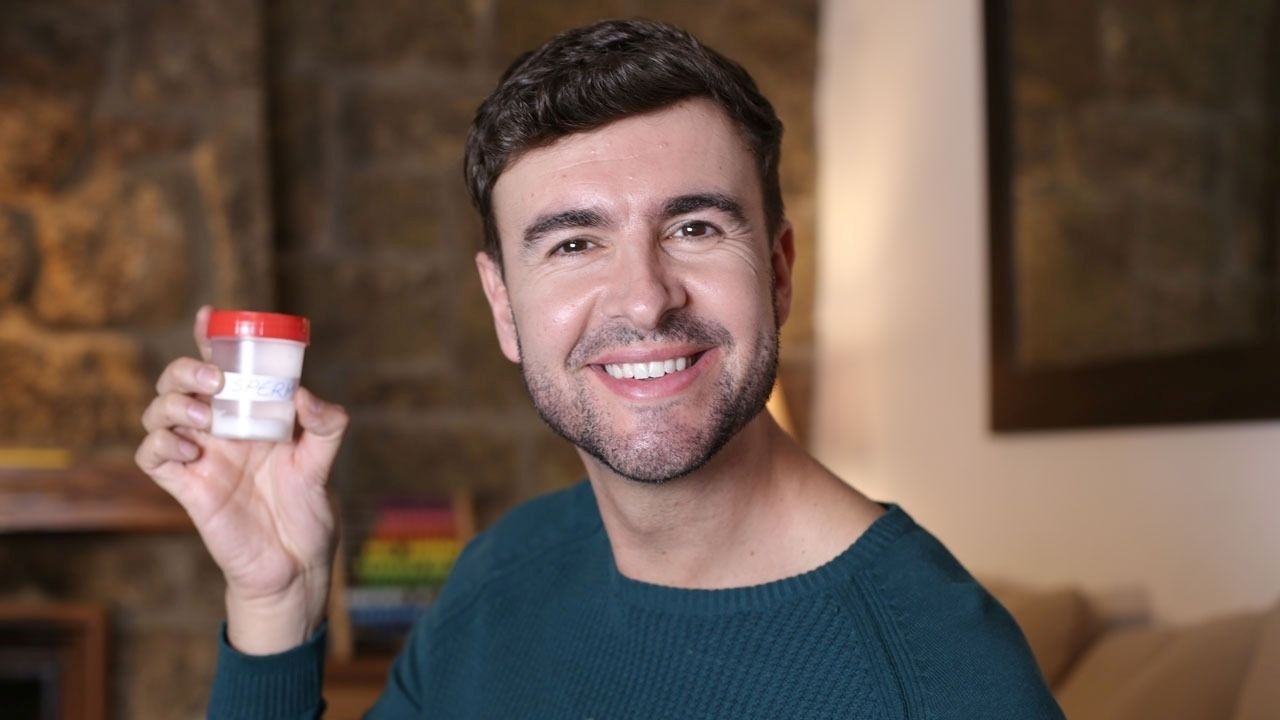What home ICI involves
The donor ejaculates directly into a sterile container (specimen cup). Draw the sample slowly into a 5–10 mL syringe and release it gently into the vagina, aiming toward the cervical opening. Unlike clinic-based intrauterine insemination (IUI) or IVF, there is no laboratory sperm preparation at home. That keeps costs low and the process simple, but it puts more weight on careful hygiene, accurate timing, and correct handling of fresh donor sperm.
For context on how long conception can take and what affects it, see the CDC’s overview: Infertility: Frequently Asked Questions.
Pros and cons at a glance
Pros
- Private and inexpensive at home
- Flexible timing around your ovulation
- No invasive procedures
Cons
- Limited evidence on success rates for the home setting
- No lab screening or preparation of the sample
- With a known donor, legal parenthood and responsibilities require planning under state law
Success rates: how to interpret them
Published data for at-home ICI are scarce. In practice, ranges of roughly 5–15% per cycle are often quoted when timing and hygiene are strong. To understand clinic alternatives and why timing varies from cycle to cycle, see ASRM’s guidance on optimizing natural fertility: Optimizing natural fertility.
Home insemination with a syringe: step-by-step
- Wash hands, clean the work surface, and set out sterile single-use supplies.
- Collect the semen directly into a sterile specimen cup.
- Let it liquefy at room temperature for 10–15 minutes.
- Draw up slowly into a 5–10 mL needle-free syringe, avoiding large air bubbles.
- Lie on your back with your hips slightly elevated. Insert the syringe tip about 1–2 inches and press the plunger slowly.
- Rest quietly for 20–30 minutes.
Handle the sample gently, avoid cold packs or heat, and aim to use it within about 30 minutes of collection — no later than ~60 minutes in normal room conditions. These practical windows align with good laboratory practice in the WHO manual: WHO Laboratory Manual 2021.

Practical timing tips
- After a positive LH test, inseminate promptly. A second attempt about 12 hours later can help cover the ovulation window.
- Keep the sample at room temperature, do not shake, and avoid pushing the plunger hard.
- Use only lubricants labeled sperm-friendly and only if needed.
- Write down cycle day, LH results, and insemination times to refine your plan.
ACOG explains how the fertile window shifts with cycle length and why tracking methods help: When to try if you’re getting pregnant.
How home ICI compares with IUI and IVF
| Method | Where | Lab prep | Typical chance per cycle | Good to know |
|---|---|---|---|---|
| Home insemination (ICI) | Home | No | ~5–15% | Low cost and private; results depend on timing, hygiene, and correct handling |
| IUI | Clinic | Yes | Often several cycles needed | Medical oversight and defined quality standards; see patient explainer: ASRM |
| IVF | Clinic | Yes | Higher per-cycle rates | More invasive and costly, but highly protocolled |
Safety and screening
If you are considering a private known-donor arrangement, ask for recent negative results for common STIs such as HIV, hepatitis B and C, syphilis, and chlamydia. For handling semen outside the body, follow the WHO laboratory principles above. If you plan to use banked donor sperm for at-home insemination, U.S. suppliers follow FDA donor-eligibility rules for screening and testing. The FDA explains these requirements here: Donor eligibility guidance and in federal regulations at 21 CFR Part 1271 Subpart C.
Syringe basics: use a clean, needle-free 5–10 mL syringe; do not let semen sit in the syringe for long; avoid extreme temperatures; and never attempt to “wash sperm at home.” For frozen banked samples, follow the vial’s thaw instructions exactly (ICI vs IUI vials differ) and the provider’s guidance.
U.S. legal basics
In the United States, legal parenthood depends on where and how conception occurs and on state law. Donor sperm used through an FDA-registered clinic or bank is screened and documented. With a known donor at home, parentage, custody, and financial responsibility can be unclear without state-compliant agreements and court orders. Before you start, get advice from a family-law attorney in your state who works with donor conception and the Uniform Parentage Act where applicable. ASRM’s ethics and practice resources outline why medical oversight and counseling are recommended for donor arrangements: Gamete and embryo donation guidance.
When to see a clinician
- Under 35: no pregnancy after 12 months of well-timed attempts
- 35 and over: no pregnancy after about 6 months
- Right away if cycles are very irregular, you have significant pain or fever, or you live with conditions such as endometriosis, PCOS, or thyroid disease
For cycle education and the fertile window, ACOG’s patient pages are a helpful refresher: Getting pregnant.
Conclusion
Home ICI can be a pragmatic route in the U.S. if you prepare sterile supplies, hit the fertile window, and handle the sample with care. Keep concise notes on your cycle and timing, prioritize safety, and understand your state’s parentage rules before you begin. With a tidy plan, realistic expectations, and consistent timing, you give yourself the best chance to turn a simple method into steady progress.

